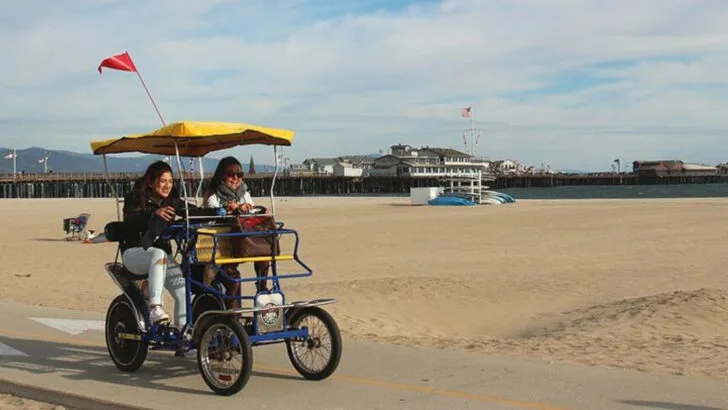California’s prettiest towns are at war—and the battlefield is Main Street. Locals crave peace, the kind where you can hear the ocean at night or sip coffee without a crowd snapping photos nearby. But visitors keep coming, chasing sunsets, wine tastings, and that “hidden gem” feeling they saw on Instagram. What was once small-town paradise is now a tug-of-war between calm and chaos. New hotels rise where old motels stood, parking spots vanish like gold dust, and longtime residents wonder if their hometowns still belong to them.
These California towns are learning that beauty comes with a price—and everyone’s arguing over who should pay it.
Carmel-by-the-Sea
Carmel-by-the-Sea, known for its enchanting beach and quaint cottages, is a favorite among visitors. Tourists flock to experience its artistic vibe and exceptional dining. Yet, residents often wish for a quieter life, away from the bustling crowds.
The town’s unique architecture and prohibition on chain stores maintain its charm. However, parking issues and noise from increased foot traffic can strain the locals’ patience. The balance of preserving the town’s tranquility while accommodating tourists is a continuous challenge.
Efforts are being made to manage tourism’s impact, ensuring both visitors and residents can enjoy this coastal gem.
Napa Valley
Napa Valley’s vineyards are world-renowned, attracting wine enthusiasts from across the globe. The picturesque landscape offers a serene escape, yet it can clash with locals seeking solitude.
Wine tours and festivals bring economic benefits, but also traffic congestion and noise. Residents cherish the quiet charm of the vineyards, which can be disrupted during peak tourist seasons.
Striking a balance, the community is exploring sustainable tourism practices to ensure the valley remains an inviting destination while respecting the locals’ desire for peace.
Big Sur
Big Sur’s dramatic cliffs and awe-inspiring vistas draw nature lovers worldwide. Its unspoiled beauty offers a tranquil retreat, but the increased visitor numbers present challenges.
Traffic jams and littering are concerns for residents who value Big Sur’s pristine environment. The surge in visitors can overwhelm the area’s infrastructure, leading to tensions.
Efforts to educate tourists on responsible travel and implement visitor limits aim to protect this natural wonder while allowing people to enjoy its splendor responsibly.
Joshua Tree
Joshua Tree’s unique desert ecosystem and striking rock formations captivate adventurers and artists alike. The area’s mystique attracts those seeking inspiration, yet not all welcome the influx.
Camping and festivals can disrupt the peace cherished by residents. The local community is actively working on initiatives to preserve the natural environment.
With a focus on eco-friendly tourism, Joshua Tree aims to keep its allure while fostering harmony between new visitors and long-time locals.
Santa Barbara
Santa Barbara’s Mediterranean charm and coastal allure make it a prime destination for those seeking sun and culture. Its vibrant arts scene and beaches draw diverse crowds.
However, the influx of tourists can strain local infrastructure, with increased traffic and housing costs affecting residents. The city’s character is shaped by its ability to blend growth with tradition.
Efforts to promote sustainable tourism and community engagement are underway to ensure that Santa Barbara retains its unique identity, benefiting both visitors and locals.

